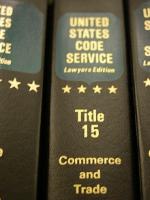
Federal Rulemaking of the Future

The federal government uses rulemaking to controls all sorts of things – the size and color of highway signs, coal plant emissions, dirt biking and snow mobiling on national lands, the grading of eggs, the nutrition information on food packages, and of course the tax code.
The Administrative Procedure Act of 1946 created the existing rule making process, theoretically with the intent of it being open to the public. It was historically paper-based and accessible largely through documents like the daily Federal Register. Only the most diligent could find anything. Therefore it is often dominated by interest and advocacy groups.
The internet created new opportunities for citizen access in the 1990s. In response, federal government created a special website, regulations.gov, to provide greater public access to the rule-making process. But that hasn’t been enough and the Open Government initiative has generated new interest in experimenting with ways to better engage the public.
This past summer, the Department of Transportation, in collaboration with Cornell’s e-rulemaking project, created a pilot project, regulationroom.org, to try new approaches to public engagement in the rulemaking process. According to Federal Time’s Sean Reilly, the pilot has not been formally assessed, but he notes that typical rules get about 50 comments and the pilot process generated 931 comments. In fact, the pilot site had 19,000 visitors during the four-month comment period on the DOT rule on increasing airline passenger protections (yes, including the peanuts provision).
The DOT effort is only one strand in a broader web of efforts to better engage the public. For example, the Federal Register website was substantially overhauled this past summer and is now far more accessible (and understandable) to mere mortals. Likewise, the regulation.gov website is undergoing a two-year overhaul to make it more user-friendly. For example, it created a special “exchange home” to encourage comments on ways to improve its accessibility. Also, the recent passage of the Plain Writing Act will help demystify rulemaking (although the Act specifically exempts rules from plain writing requirements, it does require communications with the public to be in plain language).
The next step may be to revisit the 1946 Act itself to see if there are ways to create better public access, understanding, and interest in participation. After all, many rules affect day-to-day activities and if people think government is too intrusive, or not sufficiently protective, here is where they can actually make a difference and not just complain!
Maybe this is a project for the newly-reconstituted Administrative Conference of the United States!
Graphic credit: MITOpenCourseWare



